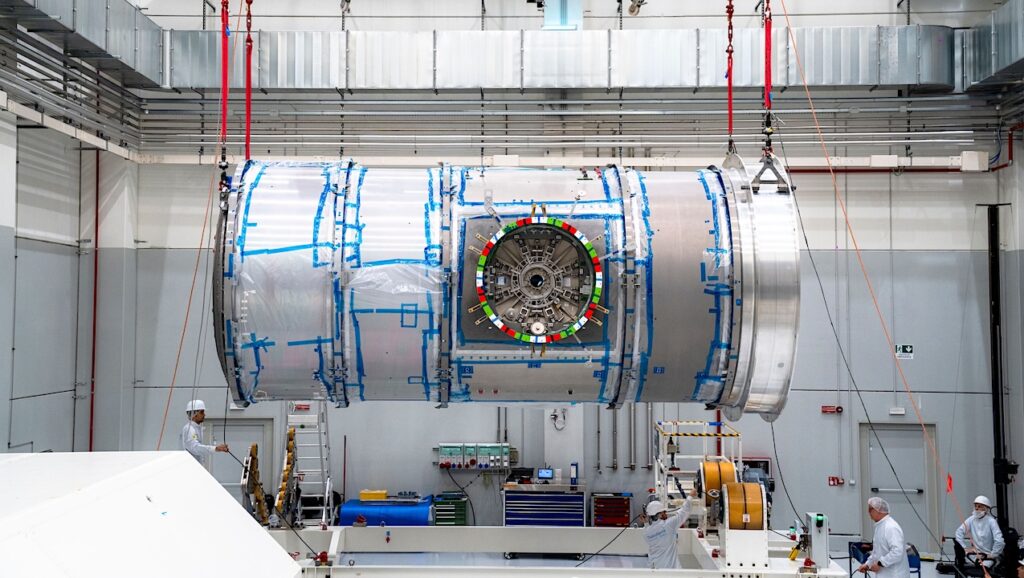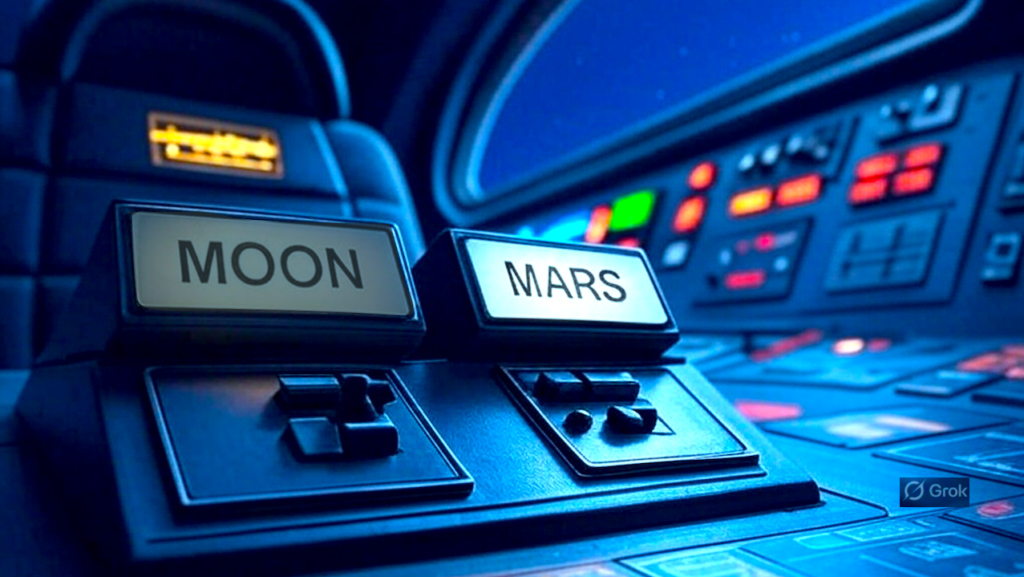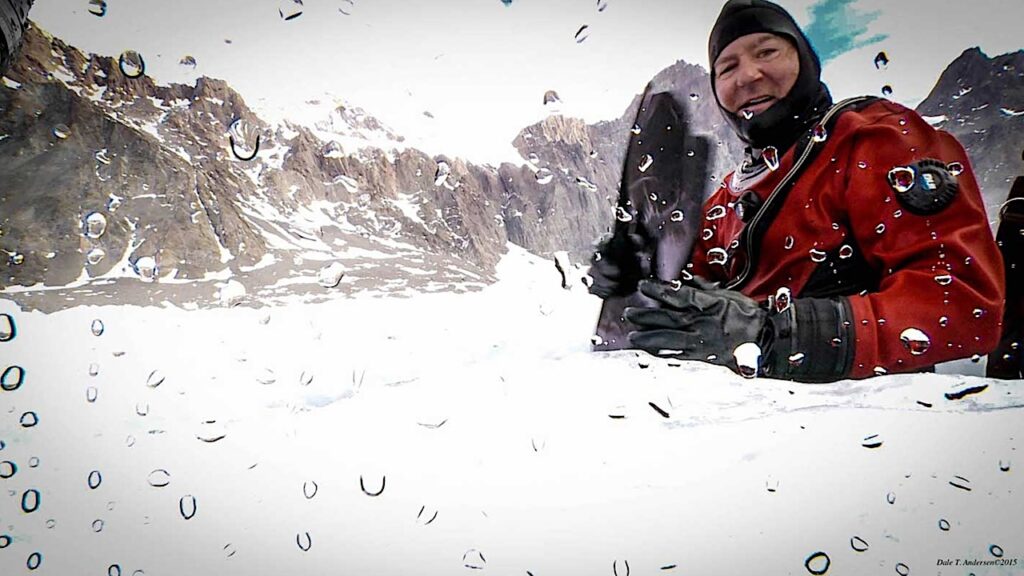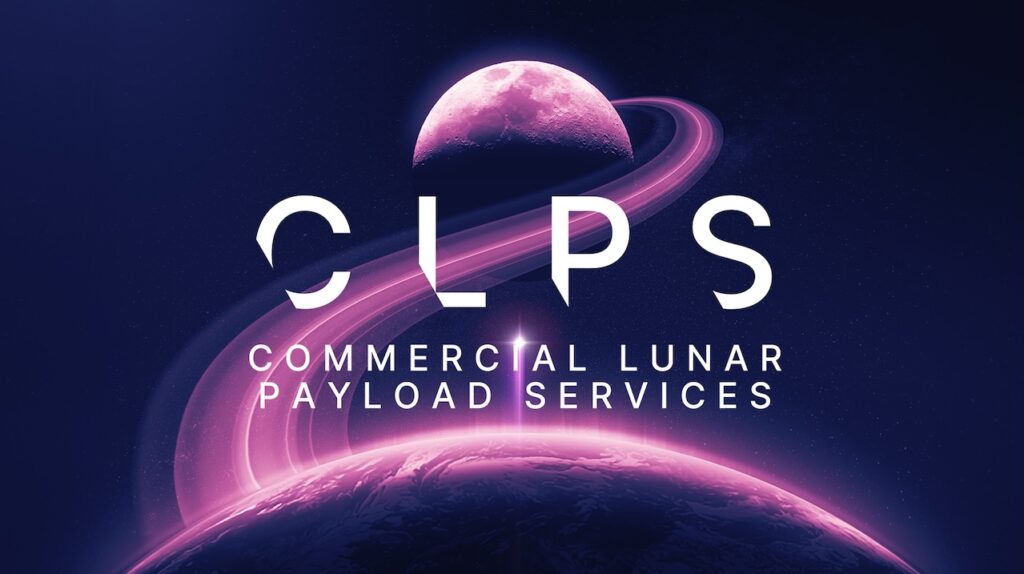Russia Says Nyet To Artemis Accords

Russia will not accept attempts to privatize the Moon, says Roscosmos CEO, TASS
“Attempts to privatize the Moon run counter to international law, CEO of Russia’s Roscosmos State Space Agency Dmitry Rogozin said in an interview with the Komsomolskaya Pravda radio station on Monday. “We will not, in any case, accept any attempts to privatize the Moon. It is illegal, it runs counter to international law,” Rogozin pointed out. The Roscosmos CEO emphasized that Russia would begin the implementation of a lunar program in 2021 by launching the Luna-25 spacecraft to the Moon. Roscosmos intends to launch the Luna-26 spacecraft in 2024. After that, the Luna-27 lander will be sent to the Moon to dig up regolith and carry out research on the lunar surface.”
– What Are The Artemis Accords And Why Do We Need Them?, earlier post





![Human Landing System Post-Budget Tag-Up [Audio]](https://nasawatch.com/wp-content/uploads/2025/05/HLS-1024x562.png)



Russia has already privatized the Moon by selling part of its lunar return sample to a private owner and its Luna 21/Lunokhod 2 rover to a private owner. Both actions by Russia were legal under the OST. But now that the U.S. is letting private firms there they complain about it and say it is illegal. Next they will say private tourists shouldn’t be allowed fly to the ISS?
Selling a few incidental grams can’t compare to a proposition essentially handing free rein to market forces.
Social policy is not the proper realm of capital interests. It is for the political process – ideally representing the broader social interests, but admittedly often struggling – to determine the best course of action.
There are so many examples showing the results of unthoughtful and laissez faire policies.
All the Artemis Accords do is reaffirm the Outer Space Treaty of 1967 signed by President Johnson and promote the Space Resources Act of 2015 which was signed into law by President Obama. All the Space Resources Act says is that Americans (individuals and corporations) have the same right to own any rocks they pick up in space the same as the U.S. government owns the Apollo samples. So all President Trump is doing is promoting a space policy put in place by the Democratic Party when it was in the White House.
I find myself less concerned, oddly, with any environmental impact than with equitable distribution of benefits. And I suppose an equitable distribution of decision making.
Unfortunately, an “equatable” distribution of wealth (or decision making) is a vague term and opens up a large can of worms. If you are talking about the difference between miners, CEOs and stock holders, I might agree with you. I probably would, in fact. But the Moon Treaty was a failure because it said (or implied) that people who had made absolutely zero contribution to the work should have an equal share of the decision making and of the profits. That’s something I would not agree with.
Exactly! If you aren’t willing to invest time or effort into a lunar venture you shouldn’t expect to benefit from it or have a say in it.
Actually, the Apollo samples are in the dozens of kilogram range and covered by the same treaties as the much smaller Luna samples. But if you are worried about the difference between small samples and massive mining operations, the Outer Space Treaty may already cover that. Even a single Apollo landing caused massive changes to the lunar “atmosphere”. That says more about how little atmosphere the Moon has than anything else. But I suspect any massive mining operations would have a big impact on the lunar environment. You probably couldn’t strip mine for ice in the regolith without producing a lot of dust, which would (or could) travel to distant locations. On Earth, there are problems with factories and mines producing pollution and their effects on people (and activities) hundreds of miles away. That would also be true on the Moon. I think there are some limits on how much resource extraction would be possible without triggering the OST’s non-interference clause. Dust fall from your mine could interfere with my the work at my station 500 km away.
Yes, I suspect the Moon will be found to be a less than ideal place for astronomy, both optical and radio. Astronaut supported telescopes in deep space will be the way to go.
That said one question that needs to be answered is how long the dust stays in the lunar atmosphere and where does it go.
The lunar atmosphere barely qualifies for that word. The density of the lunar “air” would be so low that the sparse molecules wouldn’t be enough to hold dust beyond maybe the microscopic sized variety — and the solar wind may clean what’s left right off. (OTOH, Mars’ atmosphere is small but can carry dust all over — then again, what’s already been blowing around for almost a billion years would scoff at whatever martian miners might add.)
Back to just how far lunar dust would really go during something like mining, I’d think the behavior of the particles would be similar to what would happen with small meteoroid impacts (that happens all the time) — the dust particles would be thrown up in a ballistic trajectory and would only go so far as the amount of energy inputted to it would take it, and then gravity would take over. Maybe a few feet, or maybe a hundred miles; but unless we’re talking about a major body impact, I doubt the stuff would circle the lunar globe unless it’s microscopic sized (and then, go back to my note about the solar wind)
Microscopic dust can be a concern, and the transport mechanisms aren’t as simple as you describe. Both the lunar surface and any dust above the surface have a static electric charge. That’s from both photoelectrons and free ions and electrons in space hitting their surface. So, in addition to gravity, how quickly the dust settles out depends on that and the resulting electromagnetic forces. I really doubt dust from a mine would get all the way around the Moon. But does it get 100 or 500 km from the mine? That’s not obvious, and the answer would be different for mircon-sized particles (which could affect solar array power if they settled on it) or millimeter sized particles.
Och! Ye got me, laddie — I totally forgot about that static charge issue. that would definitely be an unpleasant (and potentially unsafe) problem to contend with. Even if we had no humans in the loop, this stuff would still be a presence thanks to just all the space “imports” you just noted.
Perhaps this could be made something our earth-anchored university students could chew on: Would there be an easy way to reduce or remove such particulates from becoming a hazardous regolithic-thorn in the side of any lunar operation (mining or otherwise).
The measurements of the lunar atmosphere, dust settling and how landings would affect them are fairly simple. LADEE made a good start, but it was one small orbital spacecraft with only three instruments. with three similar instruments on a static surface platform, at multiple locations across the Moon, you could get really comprehensive and definitive results. That would hardly be a small effort compared to the current, scientific lunar program. But it wouldn’t even be a drop in the bucket compared to a single human landing. It would be easy to make that part of an Artemis version of ASLEP (Apollo Lunar Surface Experiments Package.)
The U/S. should offer them trampolines to get their people to Luna. It is hilarious that they only complain about things they are currently incapable of doing.
Thank you. A trampoline comment was definitely required here. How you like them trampolines now Rogozin?
Well, I’ve suggested some things we could do to reply to that trampoline comment. NASA wouldn’t be so insulting, but private citizens could be. Why not mail a trampoline to Mr. Rogozin and Roscosmos, with a note saying, “You suggested it, now let’s see if you can make it work.” The address is 42 Shchepkina Street, Moscow. How much would it cost to crowdsource that? Or, if SpaceX starts offering extra seats on Crew Dragon flights to tourists, and assuming SpaceX puts out a brochure, why not send Roscosmos a copy and a note about how it would cost them less than flying their kosmonauts on a Soyuz?
Man, Hurley and Behnken should name their Dragon “Trampoline”. They said they thought of a name and astronauts traditionally name their craft (except for the Shuttles understandably). They just didn’t announce it yet. Yeah NASA and SpaceX wouldn’t like that but that would be perfect. If not this Dragon, then some other spacecraft soon would be great.
NASA isn’t quite that free and easy about astronauts naming their spacecraft. They were, until Grissom and Young named Gemini 3, the “Molly Brown”. That was a reference to a Broadway musical, “The Unsinkable Molly Brown” and to Grissom’s Mercury capsule sinking. Some important people within NASA didn’t think that was funny. Then the Apollo 9 crew came up with “Gumdrop” and “Spider”, for their CSM and LM. That struck some people within NASA as frivolous. Apollo 10’s “Charle Brown” and “Snoopy” didn’t help… I think the practice from then until the last Apollo flight was that the astronauts can _propose_ names, but they have to be approved at a significantly higher level. I can’t see “Trampoline” getting that sort of approval.
SpaceX owns this Dragon, not NASA. But yeah I don’t see SpaceX and the astronauts naming something without approval after the history you mentioned. And SpaceX would want to play nice with any possible customers of course. I still like the idea 🙂
Musk said “the trampoline is working”, and Rogozin heard, so we did get something 🙂 Rogozin responded on Twitter and then Musk again, and they kept it professional. https://www.space.com/elon-…
Oh, but there was this-
Last chance to make it look a tiny bit like it is your decision. He must be insecure to feel the need to do that.
https://www.themoscowtimes….
Hmm. the mere talk of allowing private interests to profit from space resources is causing debate. I wonder what will happen when someone actually succeeds in figuring out how to make a profit from large scale space resource utilization and wants to implement it?
Good job Mr Rogozin. Russian-americans love respect and support you.
US can’t Fake another ” Moon Landing. “.
US can’t Faik another Moooon Laundebg.
Rogozin still suffers the nightmares from watching Space: 1999 that a nuclear accident at a moonbase will send the Moon hurtling out of its orbit into deep space.